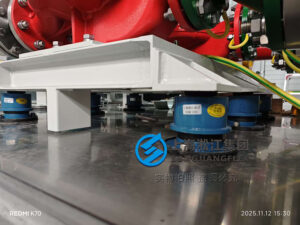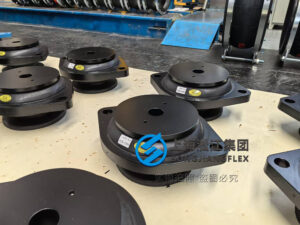Unwanted vibration causes noise, equipment damage, and premature failure. Cylindrical vibration isolators offer a compact solution for absorbing shock and isolating vibration.
Cylindrical vibration isolators are made of rubber and metal inserts, designed to reduce vibration transmission between machinery and mounting surfaces. They are essential for compressors, HVAC units, fans, and pumps.
Discover how cylindrical vibration isolators can improve your equipment’s stability and durability.
What are cylindrical vibration isolators used for?
Cylindrical vibration isolators are commonly used in industrial and commercial machinery. They absorb energy and reduce vibration between two surfaces.
These isolators are used in compressors, motors, HVAC systems, pumps, and even electronic devices. Their compact shape makes them suitable for tight spaces.
If your machinery vibrates excessively or generates noise, cylindrical rubber buffers can offer long-lasting relief with minimal maintenance.
What materials are used in cylindrical vibration isolators?
The most common materials used are natural rubber, neoprene, and EPDM. Each has specific performance traits for vibration and chemical resistance.
Natural rubber is cost-effective with excellent flexibility. Neoprene offers better oil resistance, and EPDM performs well under high temperature or outdoor conditions.
Choosing the right rubber cylindrical vibration isolator material depends on your application’s environment and load conditions.
How do you install cylindrical vibration isolators?
Installation is simple but must follow proper steps. Cylindrical isolators are mounted between the equipment base and foundation using threaded studs or inserts.
Ensure the isolators are evenly loaded and tightened correctly. Misalignment may reduce vibration dampening performance or cause premature wear.
Always refer to the manufacturer’s guide when installing shock absorber mounts for compressors, pumps, or motors.
How long do cylindrical vibration isolators last?
On average, rubber vibration isolators last between 5 to 10 years depending on load, environment, and maintenance.
Factors such as UV exposure, oil contact, or overloading can shorten their life. EPDM isolators generally last longer in outdoor or high-temperature conditions.
Regular inspection helps detect wear or cracks early, preventing equipment failure and saving costs on emergency repairs.
Do cylindrical vibration isolators need maintenance?
These isolators are largely maintenance-free, but regular visual checks are recommended.
Look for signs of hardening, cracking, or oil absorption. Any deformation or damage indicates it’s time to replace the isolator.
A well-maintained anti-vibration mount can significantly extend the operational life of your machinery and reduce breakdowns.
Can cylindrical vibration isolators be customized?
Yes. Manufacturers like Songjiangflex offer customized cylindrical vibration pads based on size, load capacity, and thread type.
Custom options also include different rubber types, hardness levels, and mounting configurations.
For OEMs or non-standard machinery, customization ensures optimal vibration isolation and structural fit.
What is the best rubber material for vibration isolation?
There’s no one-size-fits-all answer. Natural rubber is ideal for general use. Neoprene works best where oil or fuel is present. EPDM is perfect for outdoor or hot environments.
Choosing the correct material improves performance and extends the isolator’s life. Consult with a rubber vibration dampers expert to match material to your needs.
Summary
Cylindrical vibration isolators are essential for stable, quiet, and efficient machinery. Choose the right type and material for best results.






